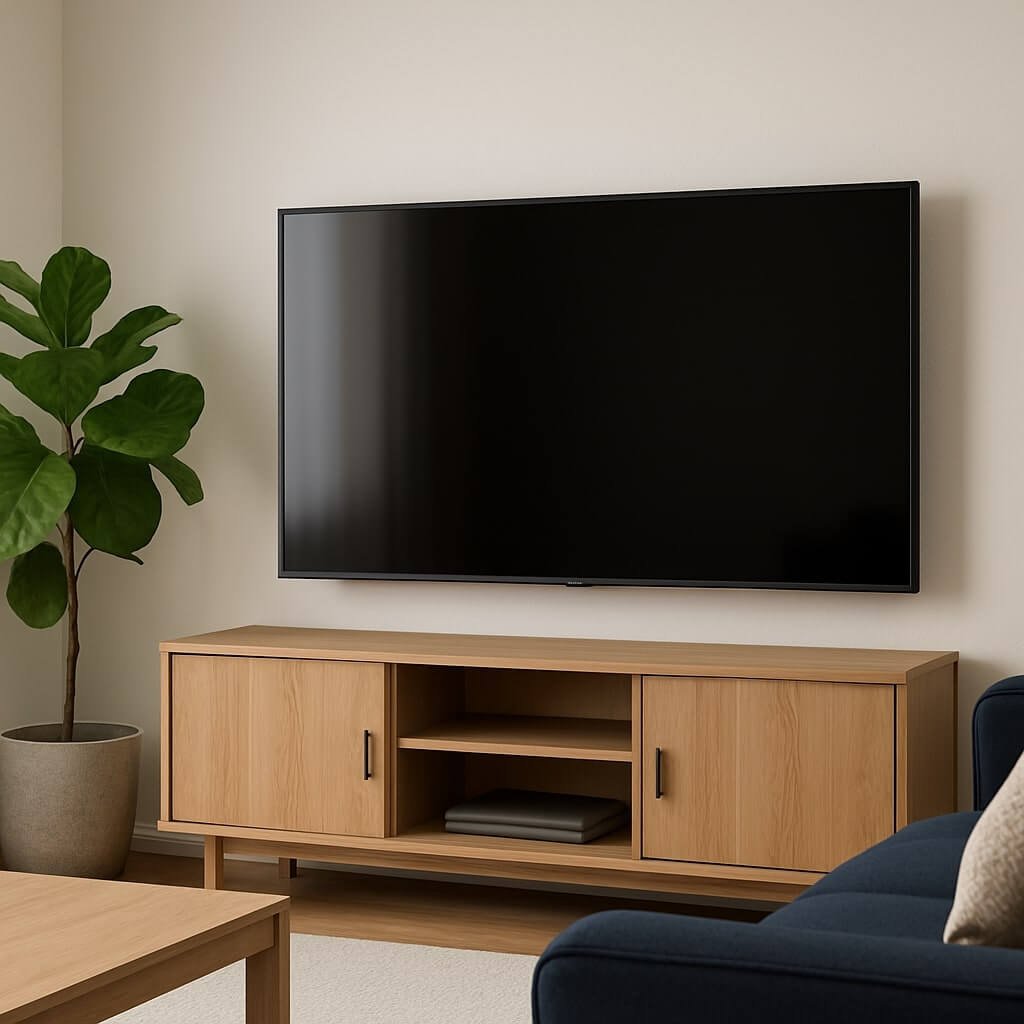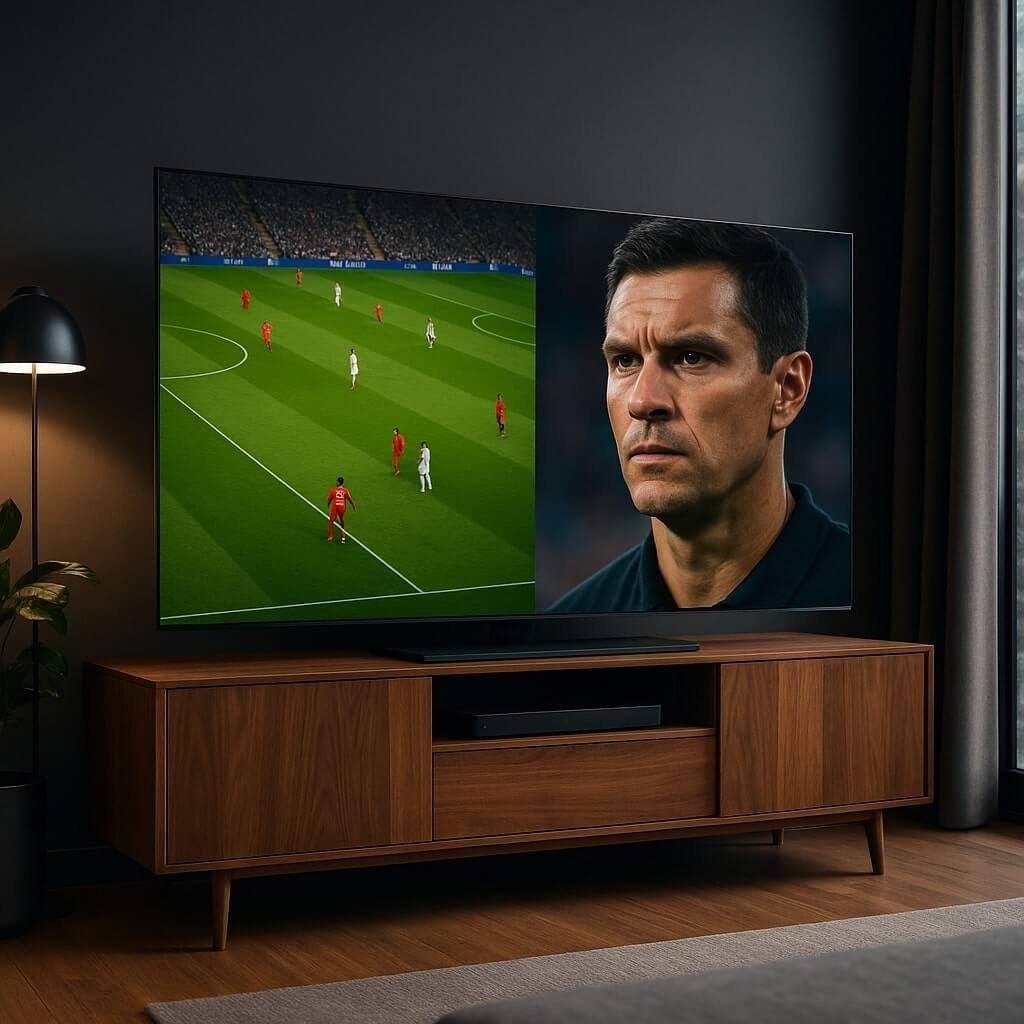Choosing the right TV size for your room isn’t just about getting the biggest screen your budget allows — it’s about finding a display that provides the most immersive and comfortable viewing experience. From distance calculations to screen resolution and room aesthetics, this guide will walk you through all the essentials to help you determine the perfect TV size for your space.
Why TV Size Matters
TV size affects both your viewing comfort and how immersive your entertainment experience will be. A screen that’s too small for your room might make you squint, while an oversized TV can overwhelm your space or even cause eye strain if viewed too closely.
How to Measure TV Size
TV sizes are measured diagonally from one corner of the screen to the opposite corner (not including the bezels). For example, a “55-inch TV” refers to a screen that measures 55 inches diagonally.
Ideal Viewing Distance Based on TV Size
A general rule of thumb is:
- HD TVs (720p or 1080p): Sit at a distance of 1.5 to 2.5 times the screen size.
- 4K Ultra HD TVs: Sit at 1 to 1.5 times the screen size because of the higher pixel density.
| TV Size | Min Distance (HD) | Max Distance (HD) | Ideal Distance (4K) |
|---|---|---|---|
| 40″ | 5 feet | 8.3 feet | 3.3 – 5 feet |
| 50″ | 6.3 feet | 10.4 feet | 4.2 – 6.3 feet |
| 60″ | 7.5 feet | 12.5 feet | 5 – 7.5 feet |
| 70″ | 8.8 feet | 14.6 feet | 5.8 – 8.8 feet |
| 75″ | 9.4 feet | 15.6 feet | 6.3 – 9.4 feet |
| 85″ | 10.6 feet | 17.7 feet | 7.1 – 10.6 feet |
How to Choose the Right TV Size for Your Room
1. Measure Your Viewing Distance
Determine how far your seating area is from the wall where the TV will be mounted or placed.
2. Calculate Suitable TV Sizes
Use the table above to cross-reference your distance with appropriate screen sizes.
3. Consider Screen Resolution
If you’re buying a 4K TV, you can go larger without sacrificing image clarity at closer distances.
4. Account for Room Layout and Furniture
Ensure the TV won’t obstruct walkways or look out of place. A TV stand or wall mount should also be considered in your room’s visual balance.
5. Check Field of View Recommendations
The Society of Motion Picture and Television Engineers (SMPTE) recommends a 30-degree field of view for an ideal experience, which can guide your TV size selection.
Room Type Considerations
Living Room
- Best size range: 55”–85”
- Tips: Larger TVs work well here if the seating is more than 6 feet away.
Bedroom
- Best size range: 32”–55”
- Tips: Consider viewing angles if watching from a bed. Wall mounting is often space-efficient.
Home Theatre Room
- Best size range: 75” and above
- Tips: Go big, but maintain proper distance and ambient lighting.
Small Apartment/Studio
- Best size range: 32”–50”
- Tips: Prioritise a balance between screen immersion and available space.
Additional Factors to Consider
Wall Mount vs. Stand
Wall mounts save space and offer better viewing heights, while TV stands provide additional storage.
Viewing Angle
Ensure the screen is centred with your eye level when seated. Tilt mounts can help adjust for off-angle viewing.
HDR and Smart Features
Larger TVs often come with better smart features, HDR support, and improved processors — a good value-added bonus.
Frequently Asked Questions (FAQs)
Is a bigger TV always better?
Not always. Bigger TVs are more immersive, but must match the room size and viewing distance to avoid eye strain and poor viewing angles.
How do I know if a TV is too big for my room?
If you have to move your head to see different parts of the screen or feel uncomfortable after extended viewing, the TV is likely too big.
What if I sit too close to a large TV?
If the resolution is low (like HD), you’ll notice pixelation. With 4K or 8K, sitting closer is fine because of the increased pixel density.
Q4: Can I mount a large TV on drywall?
Yes, but you must anchor it to the wall studs using a proper mount. Large TVs are heavy and need strong support.
Should I get a curved TV for my room?
Curved TVs offer minimal benefits unless you sit directly in front of the screen at the right distance. They’re better for home theatre setups with a single main viewing position.
Conclusion
The right TV size transforms your space into a cinematic or cozy experience — it’s not just about width but viewing comfort, resolution, and room aesthetics. By considering the factors above, you can confidently choose a screen that elevates your everyday viewing while fitting seamlessly into your room.
If you’re stuck between sizes, it’s often safer to size up, especially with 4K TVs, as long as your room and viewing distance accommodate it.






